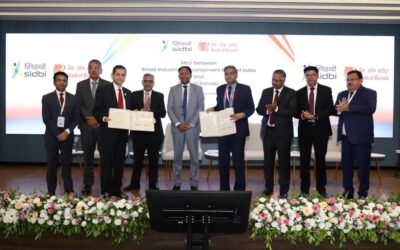Unburdening the Backbone: Inside India’s Plan to Empower Its 6.3 Crore Enterprises

India’s micro, small, and medium enterprises (MSMEs) have long been called the backbone of the economy, yet they continue to bear the heaviest load of compliance and procedural complexity. Now, a high-level government panel has recommended 38 far-reaching reforms to redefine how MSMEs operate, comply and grow. The agenda signals a long-overdue shift: from regulation-heavy oversight to trust-based facilitation.
At the heart of the proposal lies an ambition to simplify, not just in paperwork, but in philosophy. By redefining key thresholds, streamlining approvals and introducing self-certification norms, the panel envisions a lighter, smarter regulatory environment that allows entrepreneurs to focus on value creation instead of navigating red tape. The suggested exemption of MSMEs from Corporate Social Responsibility (CSR) obligations, for instance, could free up crucial working capital and relieve smaller enterprises of compliance layers designed for larger corporations.
The emphasis on “ease” is more than semantics. India’s 6.3 crore MSMEs collectively employ over 11 crore people and contribute nearly 30% to the GDP. Yet, their growth has often been constrained by overlapping regulations, ambiguous definitions and sectoral fragmentation. By harmonizing the definition of MSMEs across ministries and bringing greater predictability to licensing and inspection processes, the reforms seek to build a single, coherent framework of governance. In a sector where time lost to compliance directly translates to competitiveness lost in markets, this recalibration could be transformative.
But the implications stretch beyond MSMEs themselves. Large corporations that depend on MSME vendors in sectors such as auto components, textiles and logistics could see ripple benefits in the form of improved vendor health, timely deliveries and better creditworthiness across their supply chains. For banks and NBFCs, a more transparent and standardized regulatory framework for MSMEs could ease credit assessments and expand lending confidence. The reform momentum, if carried forward, could thus unlock a new layer of growth interdependence across the enterprise spectrum.
Of course, the success of such an ambitious overhaul will rest on execution. India’s policy ecosystem is littered with well-intentioned reform blueprints that never translated into tangible ease for the last-mile entrepreneur. The transition from recommendation to reality will require clear timelines, digital integration across ministries and perhaps most critically, a mindset shift within the bureaucracy. The idea of “simplifying” compliance must not be mistaken for diluting responsibility; rather, it should evolve into a system that rewards honest disclosure and penalizes misuse without suffocating genuine business activity.
Equally vital is communication. For many MSMEs, especially those in Tier-2 and Tier-3 clusters, awareness of new regulatory frameworks often arrives too late. The state government, trade bodies and central government policy makers must invest in proactive outreach, making reforms intelligible, accessible and actionable for enterprises on the ground. Simplification, after all, must be experienced, not just announced.
If implemented effectively, this 38-point agenda could reshape India’s entrepreneurial landscape in the years to come. Reduced compliance burdens will not only enhance productivity but also inspire confidence among first-time entrepreneurs and global investors looking at India’s MSME ecosystem as a manufacturing and innovation partner. It could also align seamlessly with broader national priorities from Make in India and Atmanirbhar Bharat to the emerging narrative of “Trust-based Governance.”
The signal is clear: India’s economic resilience depends on how fast and how fearlessly its MSMEs can move. By focusing on simplification, rationalization and trust, the government seems to be acknowledging what the sector has been saying for years, that growth is not just about capital and markets, but about freedom from friction.











